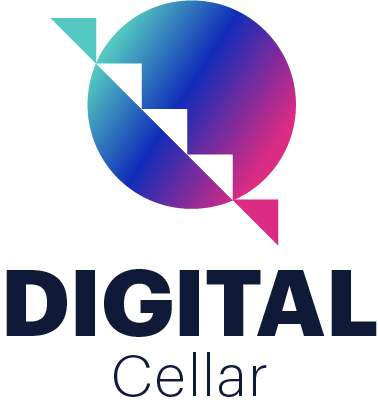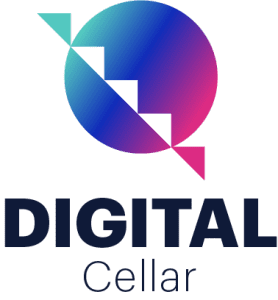In the world of SEO, when we talk about keyword search intent, we’re looking at the ‘why’ behind a person’s search on Google or other search engines. It is more like figuring out what’s going on in their heads when they type something in the search bar.
4 Main Types of Search Intent
Informational Keywords
This is when people are on the hunt for information. They might have a question or looking for any kind of information, answers, or insights about something.
Here are some informational keyword examples:
- How to make a carbonara pasta?
- What is carbonara sauce made of?
- What are the ingredients of classic pasta carbonara?
Characteristics of Informational Intent
All of the searches are based on the user’s intention of curiosity or learning. Users are often trying to learn something new, answer a question, or satisfy their curiosity. They’re not necessarily looking to buy anything just yet. Remember, your goal here is not to convert users to buy but rather to convince them to always go to your website/profile for that particular niche.
The types of queries can range from specific questions to broader topics. Usually, it begins with question keywords, starting with ‘who,’ ‘what,’ ‘where,’ ‘when,’ ‘why,’ or ‘how’.
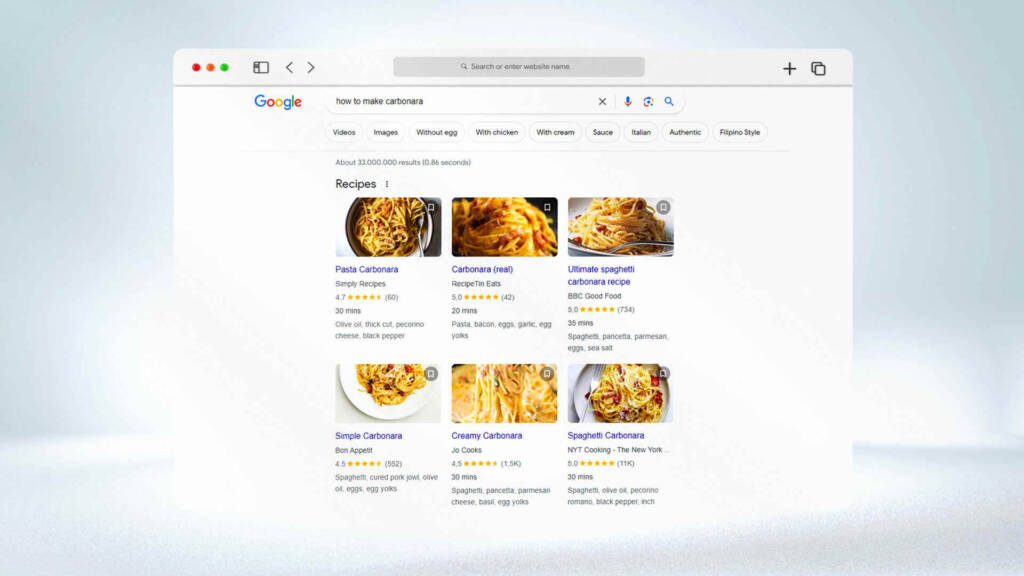
Google often shows featured snippets in search results. This can lead to quick answers to the queries.
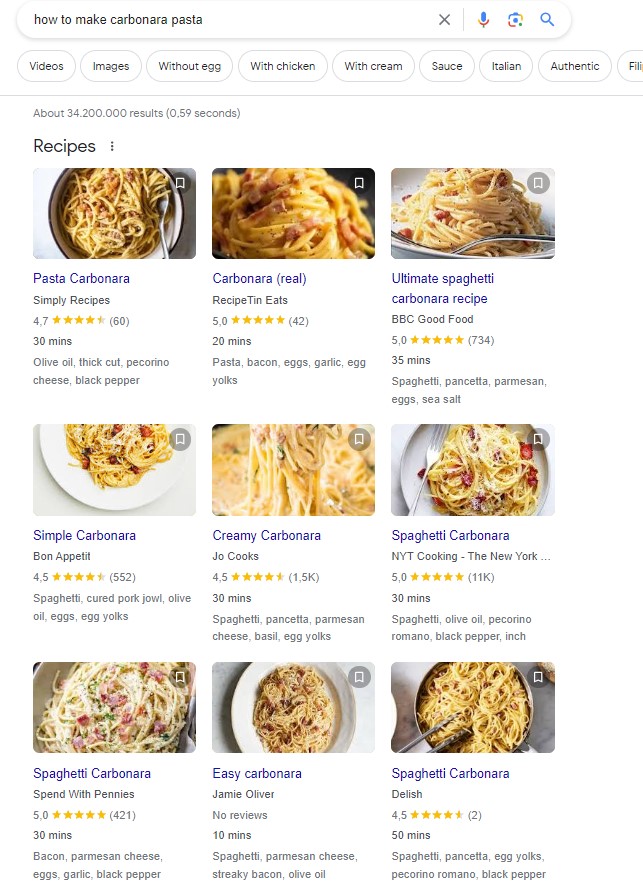
How to optimise for informational keywords?
Create content that answers questions or provides information. Use question-based keywords like “How to make carbonara pasta?” or “What is carbonara pasta?”.
Pro content tip: write an in-depth article covering key events, figures, and outcomes. Maybe even include an infographic to summarise the timeline. The key here is to provide clear, informative, and trustworthy content. Think blog posts, articles, how-to guides, FAQs, and educational videos explaining step-by-step how to do it.
In summary, catering to informational intent is about understanding the questions your audience might have and providing the best possible answers. This can create an opportunity for conversion, while these searchers might not be ready to buy, if they find your content useful, they’re likely to remember you when they are. It’s a long game.
Navigational Keywords
When people search for a particular website or webpage, they use navigational keywords to help them locate it. Users with navigational intent already have a specific website or page they want to visit. They’re just using the search engine as a quick way to get there. They are also usually very specific and often include the name of a brand, product, or service.
Here are some navigational keyword examples:
- Facebook login
- Carbonara pasta recipe Simply Recipe
They’re not looking for info about Facebook or carbonara pasta; they want to go straight to those specific pages.

If people use search engines to find your site, it means your brand recognition is high. That’s a good sign. These specific keywords can be a helpful source of organic traffic. It’s crucial to ensure your site is optimised for these brand-specific searches. You want to be the top (or one of the top) results when someone searches for your brand.
How to Use Navigational Intent?
Optimise your site for your brand name and specific product names. Make sure your website appears when someone searches for terms directly related to your business.
Tips for Optimising for Navigational Intent:
- Ensure your website is optimised for your brand name. Your site should be the first thing that comes up when someone searches for your brand. Make sure your SEO title tags, meta descriptions, and content include your brand name.
- Claim your Google My Business Listing. This is especially important for local businesses. It helps ensure that when someone searches for your business, they find the right contact details and website link. For more details and tips, you check out our GMB blog here.
- Have a clear and memorable domain name. If your website is easy to remember, it’ll be easier for people to find you through navigational searches.
But most importantly, you need to be very strong in your niche for users to be able to register your brand as a go-to domain for these specific searches. Be consistent in your content, be diligent in researching your audience, and be ahead of your competitors.
In essence, navigational intent is all about making sure that when someone wants to find you specifically, they can do so easily and quickly. It’s less about persuading and more about being accessible.
Transactional Keywords
Transactional intent in SEO is pretty straightforward – it’s all about the intent to buy or complete some other kind of transaction. When someone’s search has a transactional intent, they’re not just browsing for fun; they’ve got their wallet out and are ready to take action. You can target these keywords with optimized pages or landing pages for immediate action.
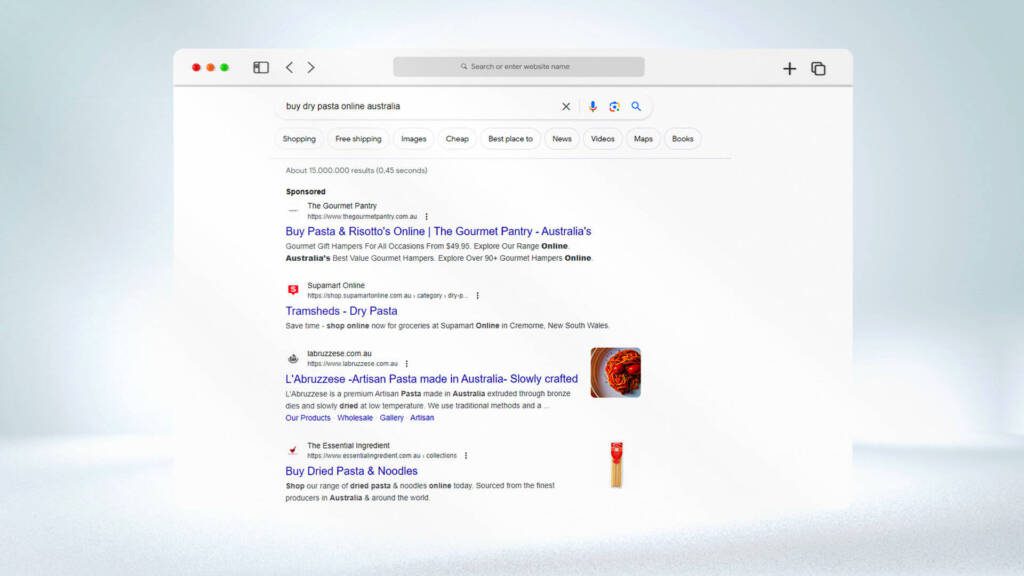
Characteristics of Transactional Intent
- Ready to Purchase. The most common type of transactional intent is when someone is ready to buy something. They know what they want and are searching for the best place to make their purchase.
- These searches are usually very specific. They might include brand names, product models, or services, and often have words like ‘buy’, ‘deal’, ‘price’, or ‘for sale’ in them.
It’s not just about buying. It can also include bookings, downloads, or signing up for a service (see image below for an example).
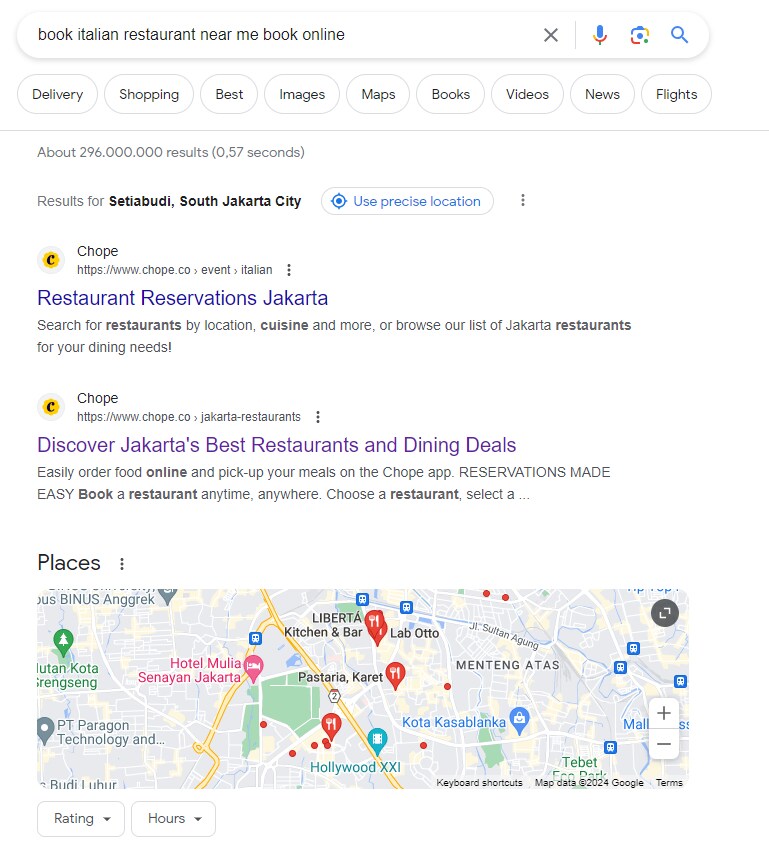
Optimising for transactional intent means using keywords and creating content that caters to buyers. This includes product pages, pricing information, and special offers. This also can lead you to a competitive edge. If you can rank well for transactional keywords, you’re in a prime position to capture sales from people who are already in the buying mindset.
How to Use Transactional Intent?
Focus on product-specific keywords and include words that imply buying intent, like ‘buy’, ‘deal’, or ‘offer’. Optimise your product pages, including clear calls-to-action (CTAs) and detailed product information. The main goal is to attract users ready to take action and convert them into customers.
Tips for Optimising for Transactional Intent:
- Use product-specific keywords. Include specific product names, models, and transaction-related terms in your content and meta tags.
- Tweak and optimise your product pages! Make sure your product pages are clear, informative, and user-friendly. High-quality images, detailed descriptions, and easy navigation are key.
- Include Clear Calls to Action (CTAs). Encourage users to take the next step, whether it’s ‘Buy Now’, ‘Add to Cart’, ‘Book Here’, or ‘Download’.
- Providing trust signals by having customer reviews, secure checkout badges, and return policies can all help reassure users that they’re making a good decision.
Commercial Intent Keyword
Let’s delve into commercial investigation intent in SEO. This is when people are in research mode for specific brands, products, or services, often just a step away from making a purchase, they use commercial keywords. They’ve got their eye on something, but they want to suss out the best options before parting with their hard-earned cash. It’s a bit like window-shopping online before deciding what to buy.
Characteristics of Commercial Investigation Intent
Searchers are doing research before buying. These users are likely to be comparing products, looking for the best deals, or reading reviews. They want to make an informed decision. They are often specific but might not include exact product names. Instead, they might search for things broader.
Unlike transactional intent where the decision to buy is immediate, commercial investigation often involves a bit of time. Users want to gather all the info before making a choice.
Here are some commercial keyword examples:
- Best Italian restaurant in Bali
- Samsung vs Apple
- Best wireless headphones 2024
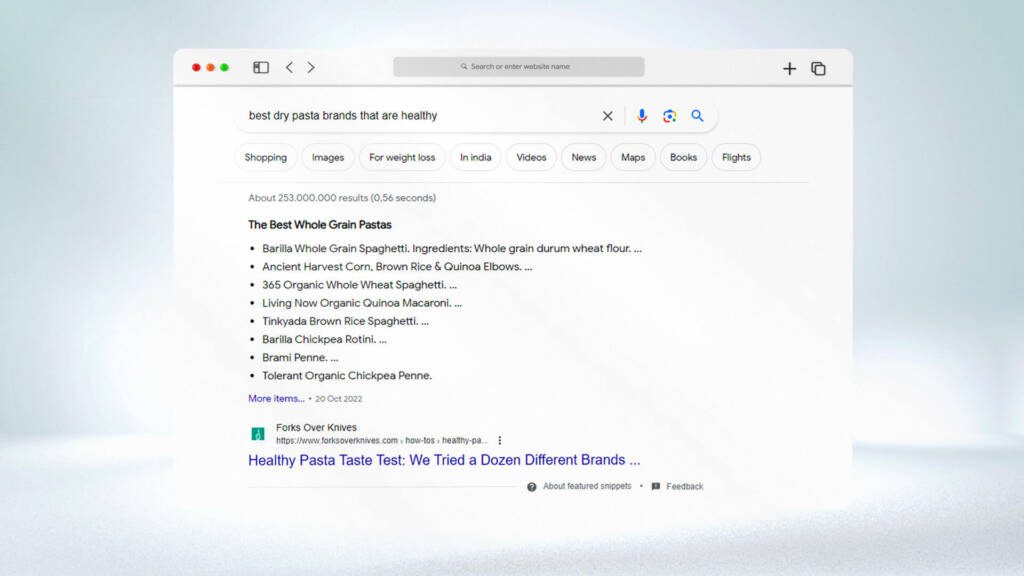
By optimizing the commercial keywords, you can hit the target of potential buyers. These searchers are valuable because they have a high intent to purchase. They’re just looking for that final nudge. This intent also opens up avenues for creating comparison guides, detailed reviews, and informative blog posts that can help sway these potential buyers.
By providing helpful, unbiased information, you can build trust with these users. This makes it more likely they’ll come back to you when they’re ready to buy.
How to Use Commercial Investigation Intent?
Produce content like comparison guides, reviews, and lists (e.g., ‘best of’, ‘top 10’). Use keywords that reflect comparison and research, like ‘review’, ‘best’, ‘vs’, or ‘comparison’.
Tips for Optimising for Commercial Investigation Intent:
- Create comparison content by producing content that compares different products or services. Be as objective and detailed as possible.
- Use keywords wisely! Include keywords that these searchers are likely to use, like ‘review’, ‘comparison’, ‘best’, ‘top’, and ‘vs’.
- Highlight all the benefits and features of your brand or product. Make sure your content clearly outlines the benefits and features of the products or services you’re discussing.
- Include customer reviews and testimonials to sway potential buyers.
- Make some recommendations. While it’s good to be unbiased, it’s also helpful to give your recommendations or personal favourites.
Commercial investigation intent is all about helping those on the cusp of purchasing to make the right decision. By providing them with all the information they need in a clear, accessible way, you’re not just boosting your SEO; you’re also positioning yourself as a helpful, trustworthy source in their buying journey.
So, now you’ve got a clearer picture of the four types of keyword intents and how each can play a pivotal role in fine-tuning your SEO strategy. Map your keywords to appropriate and relevant pages on your site with The Digital Cellar. We can help do extensive market research to boost your site’s visibility, ramp up engagement, or drive sales, we’re here to help you make sense of it all and get your website buzzing. Let’s work together to make your online presence stand out! ????????????
